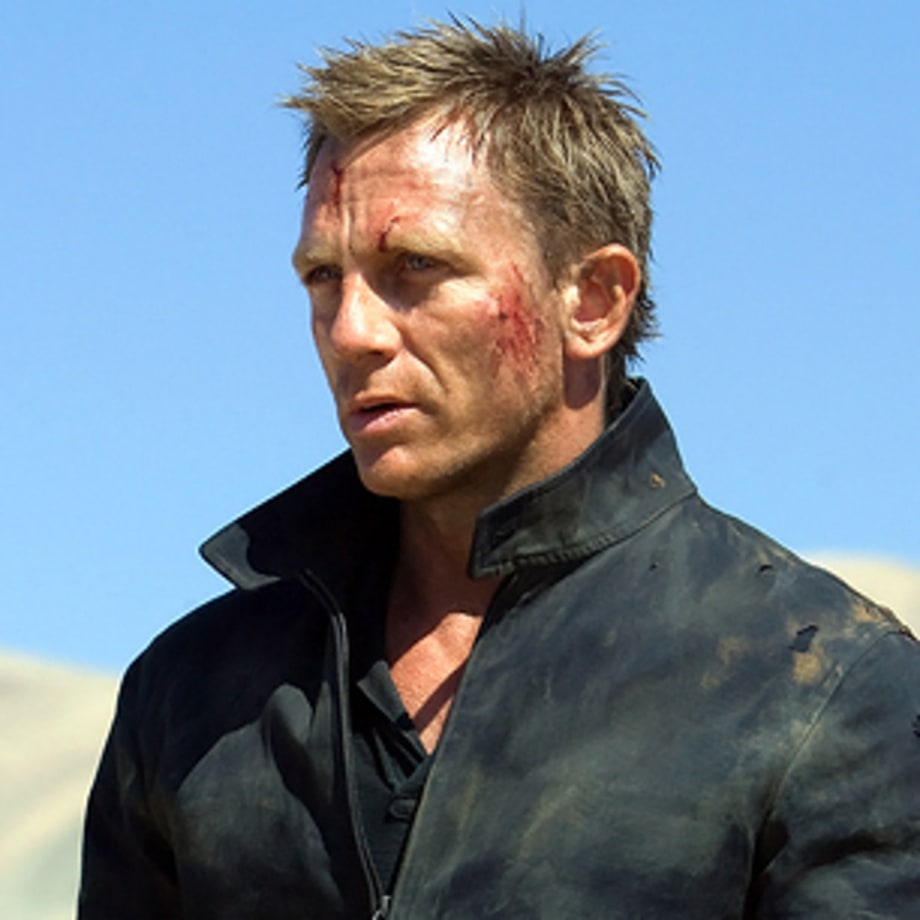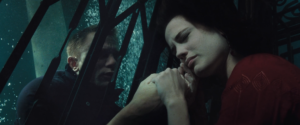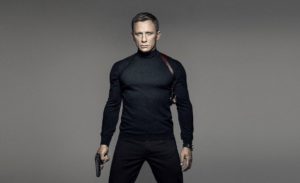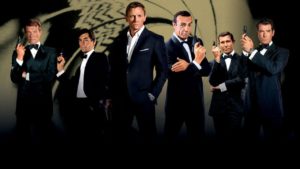
Types Tuesday
Bond. James Bond.
Paul Haggis changed the course of 007 with his reboot of Casino Royale. I had the great pleasure of working with him on Quantum of Solace as a consultant. That film followed up our work together on In the Valley of Elah.
Casino Royale effectively updated, renewed and refreshed the James Bond character for new audiences. The Bourne franchise suddenly made Bond seem old fashioned. So a complete reboot was in order.
The classic James Bond, like Indiana Jones, and the more comedic Austin Powers, was written and played as a Power of Excitement character. Stories driven by the Power of Excitement are about getting out of traps and escaping from entangling situations. They are thrill rides.
Power of Excitement characters refuse to be confined, corralled, or domesticated. They flee adult responsibilities and commitments. Peter Pan is a classic Power of Excitement character. So are the protagonists played by Hugh Grant in his early movies. These characters are incredibly charming but basically are kids. Their mantra is, “I don’t want to grow up. I don’t want to settle down.”
 Mimi Avins, in The Los Angeles Times, hits the nail on the head when she writes: “There has always been something adolescent about 007. Sure, Britain’s best-known secret agent occasionally bears the fate of the free world on his deltoids. What he hasn’t shouldered, as he’s whizzed from one adventure to another over the last 44 years, is the ordinary responsibilities and commitments of a modern adult male. He’s an eternal lad, with a teenager’s contempt for authority and the ring-a-ding-ding Rat Packer’s attitude toward women that real men outgrow about the time they realize Maxim isn’t seriously meant to be a guide to life.”
Mimi Avins, in The Los Angeles Times, hits the nail on the head when she writes: “There has always been something adolescent about 007. Sure, Britain’s best-known secret agent occasionally bears the fate of the free world on his deltoids. What he hasn’t shouldered, as he’s whizzed from one adventure to another over the last 44 years, is the ordinary responsibilities and commitments of a modern adult male. He’s an eternal lad, with a teenager’s contempt for authority and the ring-a-ding-ding Rat Packer’s attitude toward women that real men outgrow about the time they realize Maxim isn’t seriously meant to be a guide to life.”
Charming Power of Excitement characters’ devil-may-care “I just want to play around and play the field” behavior can be rakish and “bad boy” charming when a character is young. But, after a certain age, it grows tiresome can verge on the pathetic. That’s why, in his later movies, About a Boy and Brigitte Jones’ Diary, for example, Hugh Grant plays this character type’s darker side. Power of Excitement characters and actors playing the boyish scamp or charming playboy have a definite expiration date.
 The incredibly valuable Bond franchise was facing a difficult dilemma in remaking Casino Royale. The perennially adolescent Power of Excitement Bond had been around for a long time and might not seem as appealing to the current, more cynical, movie-going audience. An expiration date was looming. These are darker and less innocent times than when the Bond movies debuted with such flash and fun in the psychedelic 1960’s.
The incredibly valuable Bond franchise was facing a difficult dilemma in remaking Casino Royale. The perennially adolescent Power of Excitement Bond had been around for a long time and might not seem as appealing to the current, more cynical, movie-going audience. An expiration date was looming. These are darker and less innocent times than when the Bond movies debuted with such flash and fun in the psychedelic 1960’s.
So how does 007 evolve and grow up? What kind of character is the new “more adult” Bond? The producers’ and screenwriters’ answer was to transition the character from a Power of Excitement character to a Power of Reason character.
Power of Reason stories are about alienation vs. connection. They are about order vs. chaos. These characters are distant, sarcastic and can be perceived as cold. It’s not that these characters don’t feel things— the trouble is, they feel things too deeply. To avoid being overwhelmed by their emotions Power of Reason characters shut down and withdraw into themselves. Bond’s reaction after Vesper’s death.
 Power of Reason characters are experts in their field. They are stubborn, tough, and opinionated and always believe they know best. They are loners and prefer to work alone. These characters buck authority because they believe they are best left to their own expert devices.
Power of Reason characters are experts in their field. They are stubborn, tough, and opinionated and always believe they know best. They are loners and prefer to work alone. These characters buck authority because they believe they are best left to their own expert devices.
These characteristics lead Bond to clash with M over and over in Casino Royale. This new Bond is more resolute and less cavalier than the previous Power of Excitement Bonds. Earlier 007s had a devil-may-care attitude of rebellion against “adult” constraints and authority. The new Bond simply believes he knows best and should be left to it.
Daniel Craig was an inspired choice to play the new Bond. Despite early carping and criticism by fans, his character type is ideally suited to this Power of Reason 007. Writing about some of his early stage work a reviewer noted that Craig “contains his violence like an unexploded mine.” There is a cool and controlled quality to Craig’s previous roles in Layer Cake and Munich. His expertize and ability to disengage and get the job done, despite the internal and/or moral cost.
 Another excellent example of a Power of Reason story and character is Luc Besson’s wonderful film, The Professional, starring Jean Reno as Leon, a hit man. Leon meets a little girl under crisis circumstances and learns to love— with tragic, but heroic, consequences.
Another excellent example of a Power of Reason story and character is Luc Besson’s wonderful film, The Professional, starring Jean Reno as Leon, a hit man. Leon meets a little girl under crisis circumstances and learns to love— with tragic, but heroic, consequences.
Television Power of Reason examples include Dr. Gregory House on House and the comedic detective series Monk. Even though all these characters are individually very distinctive, they each share the same emotional and motivational core.
When transitioning a character the question is how to recast the same behavior with a compelling new motivation. Consistency, authenticity and character type is key. Previous 007s killed as sport and barely rumpled their tuxedos. They were flip, flash, and fun: the eternal “lad.” This new adult Bond doesn’t avoid obligations and responsibilities. He executes them, both literally and figuratively, with chilling and brutal expertize. This is a Bond who is bloodied but unbowed. He has scars on his soul. And he doesn’t really give a damn if his martini is shaken or stirred. He has darker, more adult concerns.
The good news is that Daniel Craig as 007 is back in 2019! I hope he is put to work fighting Neo-Nazis and alt-right terrorists!







No comment yet, add your voice below!